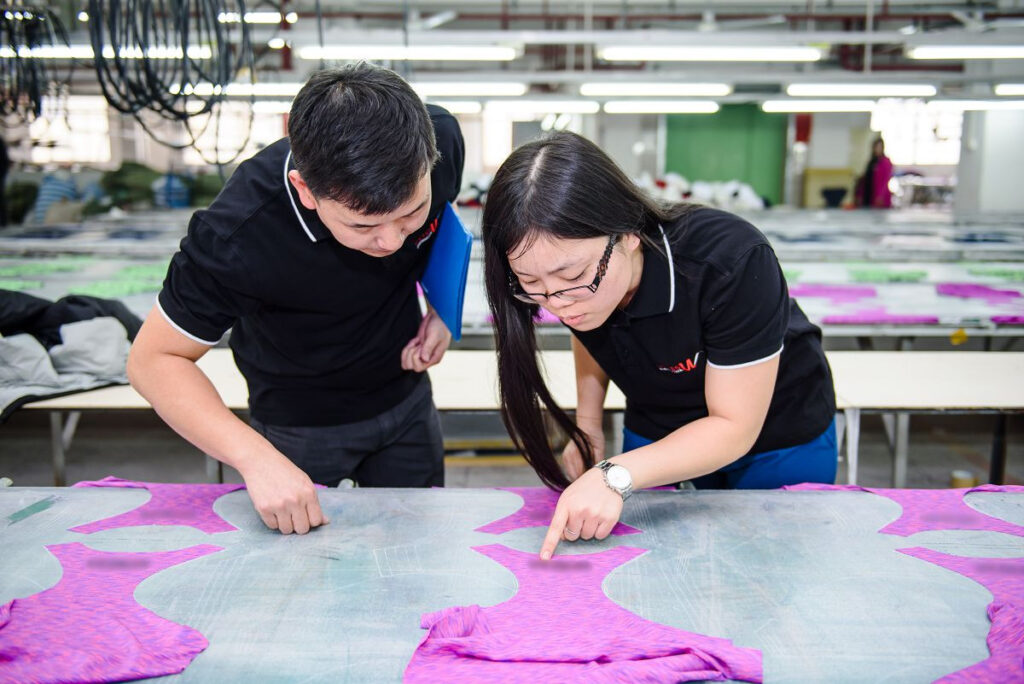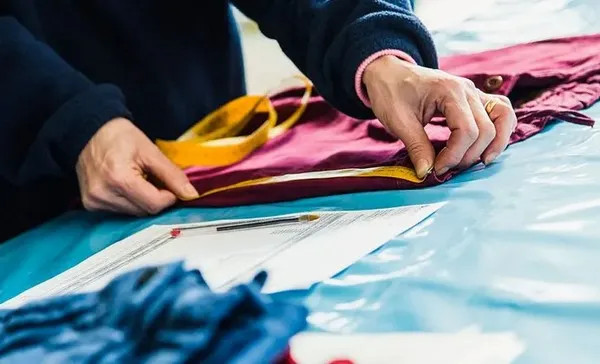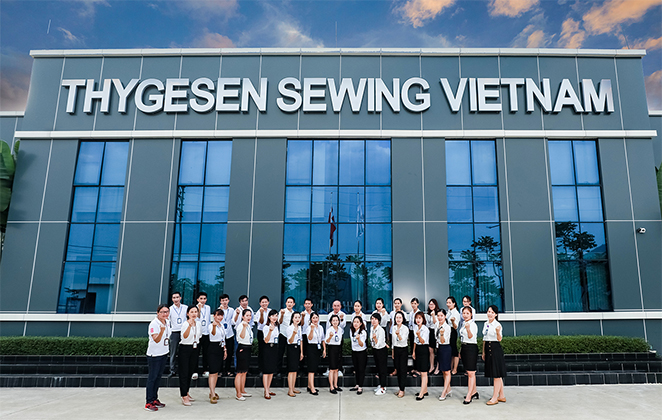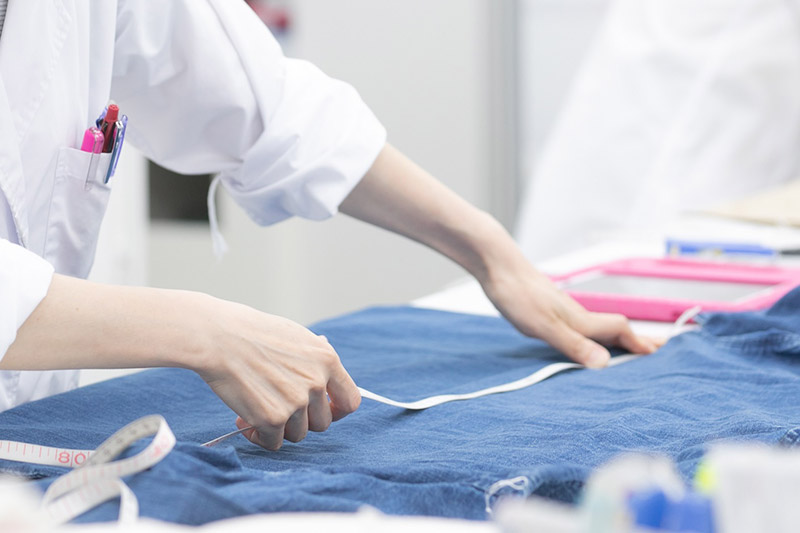Introduction
The key to a good quality control process for clothing is to provide the inspectors with precise instructions on standards. Because of the stringent garment quality checking procedures, they carry out on the manufacturing line, before their apparel is transported to suppliers and put on store shelves, the major clothing companies known for consistently high quality have persisted for years. Let’s learn about Garment Quality Control Procedures that they strictly follow.
What is Quality Control in Apparel Industry
Garment quality inspection processes are a preventative measure to identify flaws and problems that could impair quality and eventually hurt the brand and lower the chance of expensive product recalls and consumer complaints.

The concept of quality may be understood in a variety of ways. Consequently, it can be challenging for anybody to determine whether or not an article of clothing is of high quality. Thankfully, quality control in the apparel industry follows an uniform set of industry quality standards and guidelines for how to assess quality in the apparel sector. Quality control in the garment industry and clothing is essential to the success of the industry as a whole since it ensures that each and every item produced is of the highest possible standard and conforms to all applicable laws and guidelines.
Why is Quality Control Important in the Apparel Industry?
After at least eighty percent of an order has been packed for shipment, quality control inspectors will look through each item one at a time to verify that it satisfies the requirements specified by the client before the order is shipped. This technique makes it easier to find errors and reduces the possibility that customers will have something negative to say. And yes, as you can see, examining a garment that is finished involves looking for visible flaws, checking the labels, and counting the parts as part of the normal procedure.
So why is it so important to have quality control in the Apparel Industry?

In the garment industry and in the apparel sector more generally, quality control is very necessary in order to guarantee that all products are of a consistently high quality and correspond to all applicable standards, rules, and regulations. In order for a company to sell its wares on worldwide markets, it is necessary for that company to comply with a variety of regulations, both legal and non-legal in nature. These include, but are not limited to, the use of chemicals (REACH), stating the material content and quality, particular standards for children’s wear, and regulations for clothing labeling. In addition, there are special criteria for the labeling of children’s clothing.
If you want to export your product to a foreign country, you’ll have to comply with a new set of regulations, and those requirements are always subject to revision. At HQTS, we always advise our clients to get the counsel of a knowledgeable professional who is familiar with the many international standards and regulations. It is possible that it is important to do testing on garments in order to check for the presence of compounds that are prohibited and to ensure that they adhere to international and national standards such as those established by the ASTM, AATCC, ISO, EN, JIS, and GB, amongst others.
Garment Quality Control Procedures
And yes, here it is, the part that we are all looking for – the procedure of garment quality control. In this section, we will introduce to you the most detailed and informative information about the garment quality control process!

The quality control process includes 20 steps. It seems difficult and hard to follow, but believe us, just a simple touch and voila, here you go!
- Step 1: First, you need to evaluate the fabrics, trimmings, and accessories in comparison to the buyer’s requirements. Please take your customer’s measures carefully, you don’t want to miss that, right?
- Step 2: Make a sample of a size set, and bring it to your company private meeting so it can be discussed.
- Step 3: Check your adjustment of the pattern according to the dimensions of the garment.
- Step 4: After the disscused meeting, cut a sample of 300 pieces spanning all size ranges as a pilot run to verify that all size measurements are accurate before moving on to cut the rest of the pieces.
- Step 5: In the Card Room area, you should keep a printed pattern library.
- Step 6: If there is a difference in the amount of shrinkage between the fabrics of more than 2%, an unique design will be produced. This step is super important, so please check it carefully!
- Step 7: Before commencing the cutting process, you need to make sure that the material and the accessories are suitable for mass use.
- Step 8: After the bulk cutting has been approved by the buyer’s quality control, cutting will proceed.
- Step 9: Make sure that the pattern is checked against each of the cut panels, and that your records are preserved in accordance with standard operating procedure, which is also known as SOP.
- Step 10: Before being brought to the sewing division, each of the cut panels will be given a quality inspection.
- Step 11: After fusing, you should test the strength of the textiles’ bond with the interlining and then fuse the temperature record that is affixed using thermal paper.
- Step 12: Keeping Check the sample for each different running style to make sure that the outfit styling is correct.
- Step 13: Make sure that all of the marking equipment, especially the pen and the chalk, are completely undetectable. Make light notes with a pencil that can be wiped everyday, check for oil leaks from the machine by placing blotting paper or cloth beneath the pressure foot, and use the magnet to double-examine all the machine’s inside components for any additional needles.
- Step 14: Make it a daily habit, or create a daily notion to remind yourself to check that all of the machine tension and feed rock are correctly set up according to our actual fabric quality, and make sure to keep a record of the mock-up.
- Step 15: Both the record of needle changes and the needle control are maintained up to date.
- Step 16: Complete quality control of the garment at every stage, from cutting to stitching to finishing
- Step 17: In completing, each and every one of the outfits will be measured.
- Step 18: A metal detector is used to check and record daily button pull tests, and garments are scanned by a machine.
- Step 19: Keep folding and packing accurate in accordance with the buyer’s approval
- Step 20: Inspect the work every day and get the buyer’s approval before proceeding.
And that is all! These are 20 steps to make your garment quality control procedure perfect!
Ending:
And these are everything you need to know about the garment quality control procedure! With our sharing today, we hope that you can make your garment quality control procedure outstanding! If you find our sharing helpful, don’t hesitate to share it with your friends and loved ones!


